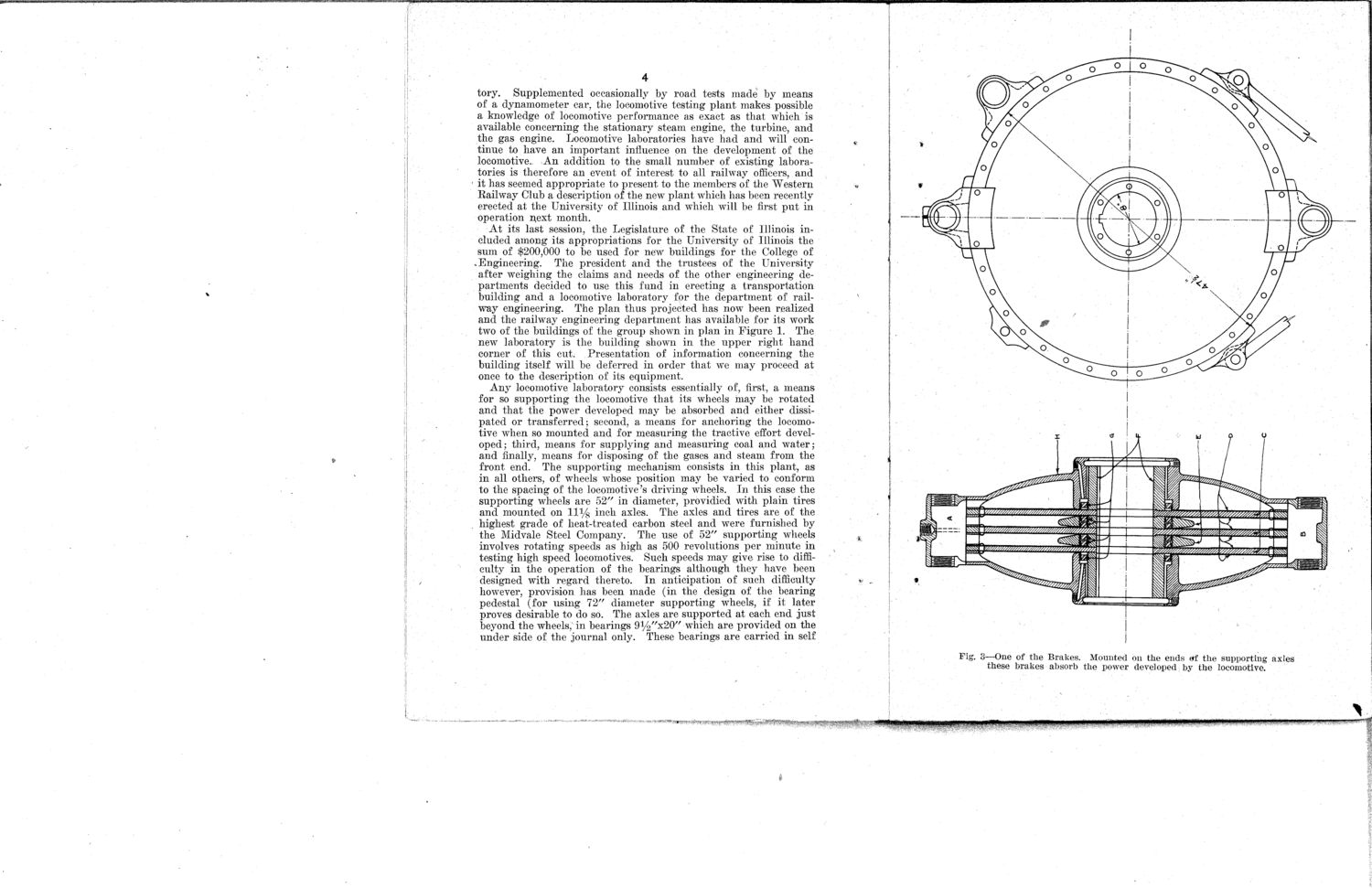| |
| |
Caption: Dedication - Locomotive Testing Laboratory (1913)
This is a reduced-resolution page image for fast online browsing.

EXTRACTED TEXT FROM PAGE:
4 tory. Supplemented occasionally by road tests made by means of a dynamometer car, the locomotive testing plant makes possible a knowledge of locomotive performance as exact as that which is available concerning the stationary steam engine, the turbine, and the gas engine. Locomotive laboratories have had and will continue to have an important influence on the development of the locomotive.. An addition to the small number of existing laboratories is therefore an event of interest to all railway officers, and it has seemed appropriate to present to the members of the Western Railway Club a description of the new plant which has been recently erected at the University of Illinois and which will be first put in operation n,ext month. At its last session, the Legislature of the State of Illinois included among its appropriations for the University of Illinois the sum of $200,000 to be used for new buildings for the College of * Engineering. The president and the trustees of the University after weighing the claims and needs of the other engineering departments decided to use this fund in erecting a transportation building and a locomotive laboratory for the department of railway engineering. The plan thus projected has now been realized and the railway engineering department has available for its work two of the buildings of the group shown in plan in Figure 1. The new laboratory is the building shown in the upper right hand corner of this cut. Presentation of information concerning the building itself will be deferred in order that we may proceed at once to the description of its equipment. Any locomotive laboratory consists essentially of, first, a means for so supporting the locomotive that its wheels may be rotated and that the power developed may be absorbed and either dissipated or transferred; second, a means for anchoring the locomotive when so mounted and for measuring the tractive effort developed ; third, means for supplying and measuring coal and water; and finally, means for disposing of the gases and steam from the front end. The supporting mechanism consists in this plant, as in all others, of wheels whose position may be varied to conform to the spacing of the locomotive's driving wheels. In this case the supporting wheels are 52" in diameter, providied with plain tires and mounted on 1 1 % inch axles. The axles and tires are of the highest grade of heat-treated carbon steel and were furnish e< i by the Midvale Steel Company. The use of 52" supporting wheels involves rotating speeds as high as 500 revolutions per minute in testing high speed locomotives. Such speeds may give rise to difficulty in the operation of the bearings although they have been designed with regard thereto. In anticipation of such difficulty however, provision has been made (in the design of the bearing pedestal (for using 72" diameter supporting wheels, if it; later proves desirable to do so. The axles are supported at each end just beyond the wheels, in bearings 9 1 /2 // x20" which are provided on the under side of the journal only. These bearings are carried in self Fig. S—One of the Brakes. Mounted on the ends etf the supporting axles these brakes absorb the power developed by the locomotive. ! •
| |